4 REGIONS OF BOLIVIE
La Paz – Titicaca Lake & Salar de Uyuni – Santa Cruz & Jesuit missions – Historical & colonial Bolivia
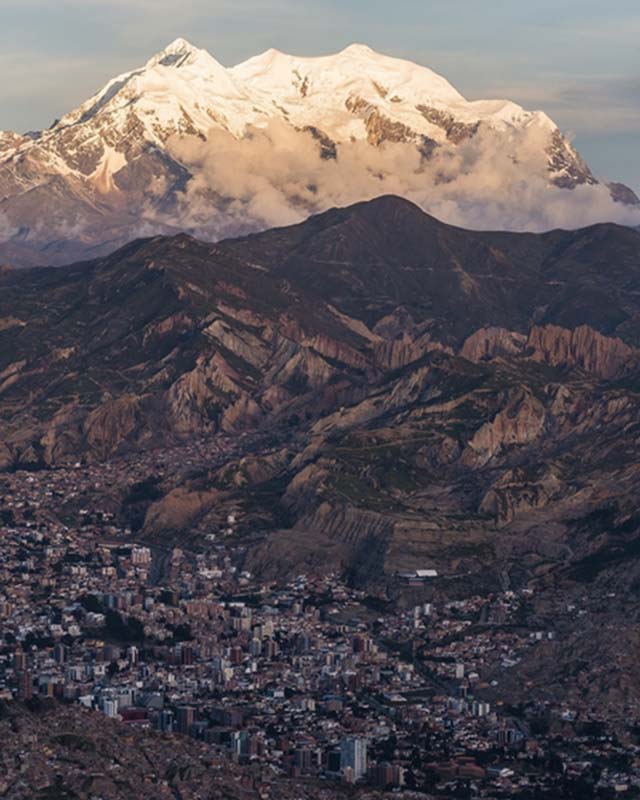
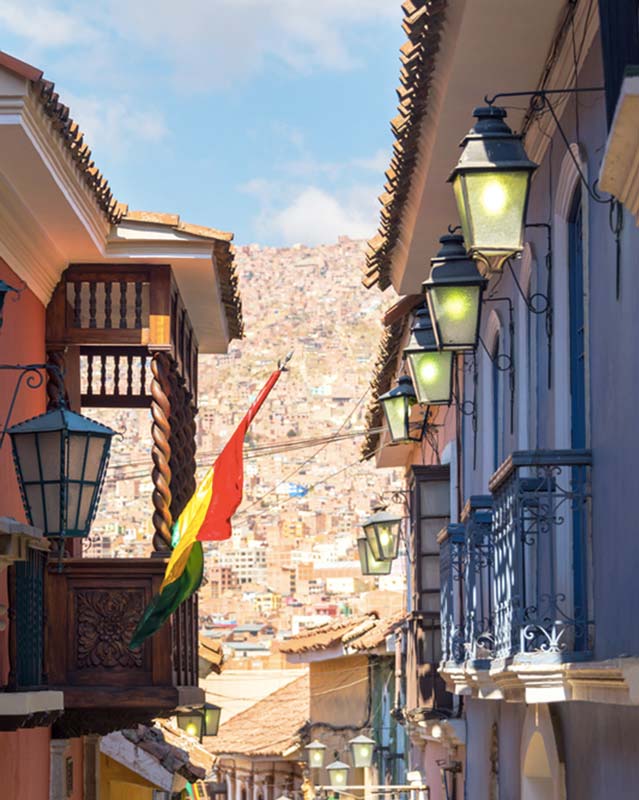
La Paz
La Paz, 3660 meters of altitude, stretches on the Andean rock walls endlessly. The city shares with Sucre the country’s government. However, La Paz remains the economic center of the country. There are no direct flights from France. However it is possible via Lima, via Santa Cruz de la Sierra or through some American airlines.
There are many other possibilities by land if the traveller would like to travel in a combined trip to Peru, leaving from Puno as well as to Chile leaving from San Pedro de Atacama.
“El Prado” is a neighborhood where the most spectacular monuments of the city are and have to be visited: Place Murillo and Place San Francisco. From always lively Murillo Square can be sighted the vast cathedral and the presidential palace. The archaeological museum displays a small collection covering the five periods of the Tiahuanaco culture. Also do not miss the “witches market” which stretches all along Jimenez and Linares streets. Aymaras’ boutiques offer unusual potions, the oddest fetishes and many medicinal herbs.
The San Francisco Church – 16th and 18th century – deserves a considerate visit as well as its museum.
It is a remarkable sample of combined art where the Spanish baroque style blends with native culture’s input. Cut stone sculptures decorate the facade which shows tropical birds and Iberian patterns.
Taking time to ramble in downtown La Paz is a must as it is so lively and entertaining. The end of the visit can be dedicated to climbing El Alto, the ultimate neighborhood Aymara. Panoramic view of the city.
La Paz is also a gourmet stop especially at “El Prado” 16 de Julio Avenue. Many cafés must be visited to meet some locals wearing the Aymara traditional outfits.
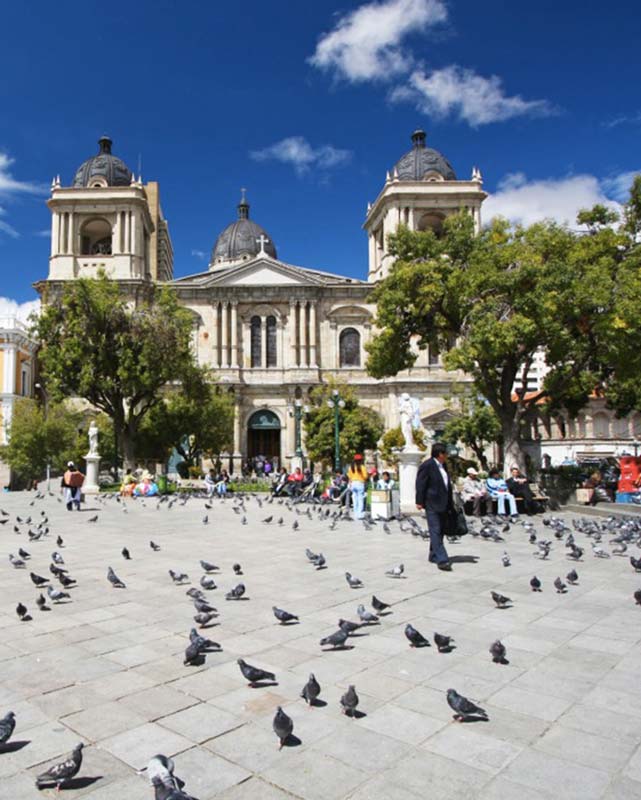
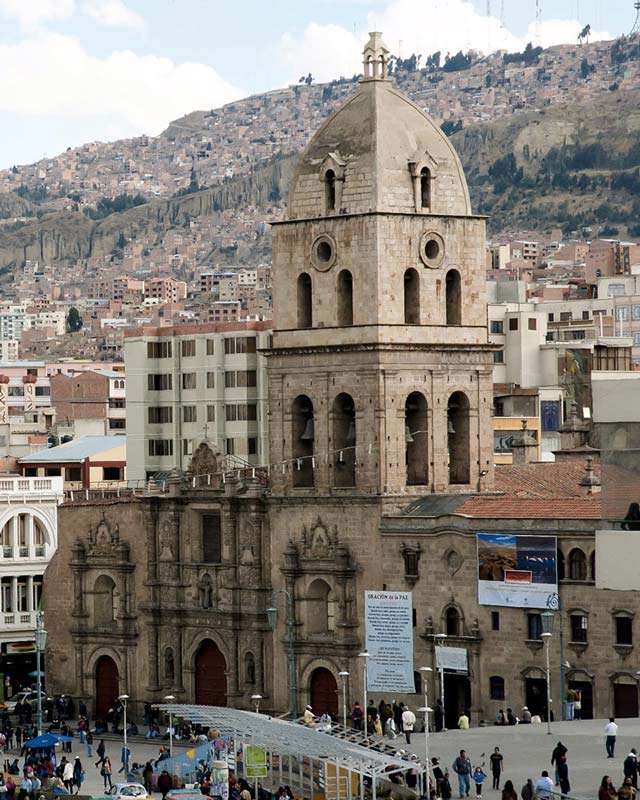
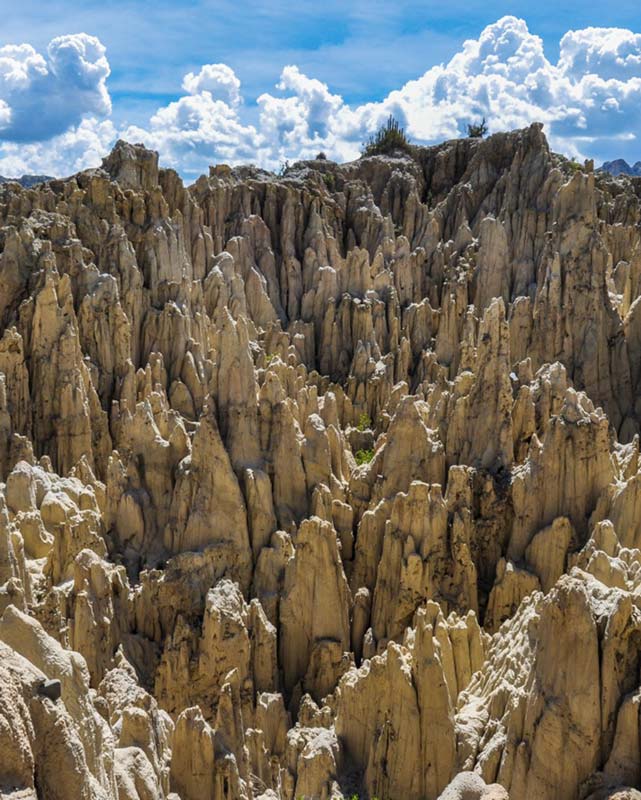
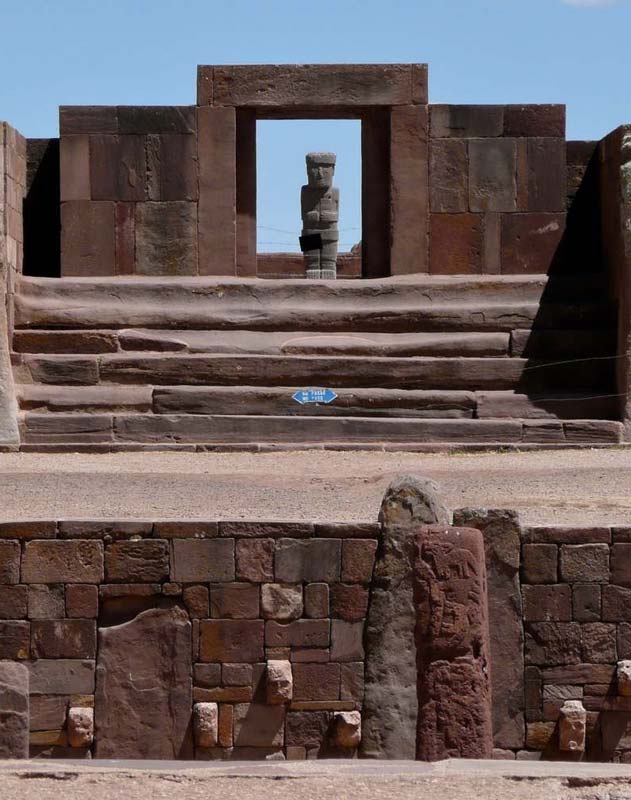
MOON VALLEY
Moon Valley – 30 minutes away from La Paz, it displays a distinctive Andean arid landscape: labyrinth of gorges and eroded picks in a place where only cactus grow.
Tihuanaco (Tiwanaku) – Major archaeological site of Bolivia approximately two hours drive from La Paz.
Great ceremonial center from 6000 years BC, when the Inca Empire did not even exist.
The monuments of the site, pyramids, monoliths, sculptures and stairs built in bluestone and sandstone are impressive by their dimensions and the size of the stones used.
Some sculptured patterns are only symbols of the lost civilization, furthermore immersed in an important mystic fervor.
Titicaca
LAKE
Bolivia shares the blue sapphire waters of Titicaca with Peru offering nice trip routes both leaving from Puno (Peruvian riverside) from Copacabana (Bolivian riverside). Overlooked by the Royal Mountain Range and with scattered islands, the lake displays magical sceneries and a one day cruise to discover it is not only a must-see but one of the most strong points of a trip to Bolivia.
Copacabana, at 3800 meters of altitude, overlooks the south bank of the lake and remains the ideal starting point for trips. This is a city with a strong indigenous population, the Aymaras and an invitation to stroll in the always lively downtown. Important place of pilgrimage for centuries, the visit of the huge cathedral built in the Moorish style is paying homage to the “Virgen Morena”, the black statue of the Virgin of the Candelaria, which celebration takes place on February 2nd every year.
The cathedral houses a little museum dedicated to sacred artifacts. Leaving Copacabana by boat or hiking, the visit of Isla del Sol (Island of the Sun) unveils the legendary birthplace for the creation of the Inca world.
The site is still venerated by the indigenous communities as the place where the white God Viracocha and the first Inca couple, Manco Capac and his spouse Mama Ocllo, appeared on earth by a miracle of the Sun. The landscapes are magnificent and many little villages deserve to be visited, including Yamputa, Sampaya and Yumani. Around the villages, the discovery of archeological remains, Palace of the Inca, Temple of the Inca, some used still as places for prayers, complete the visit.
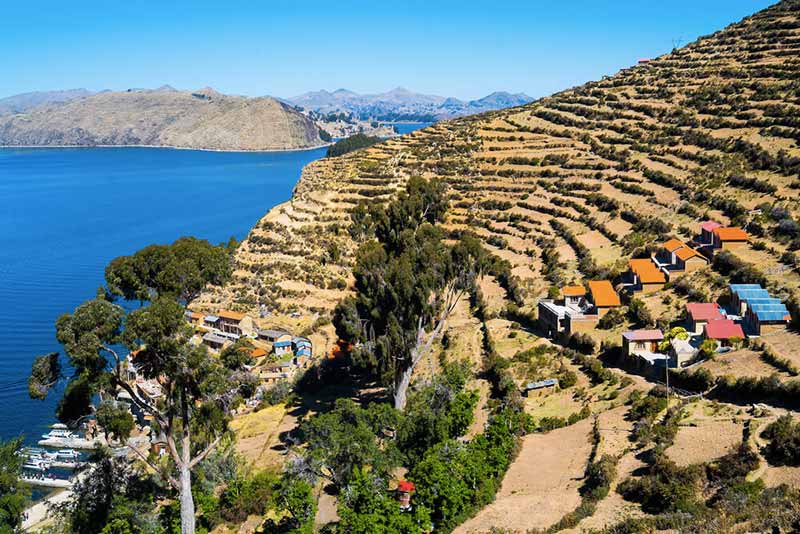
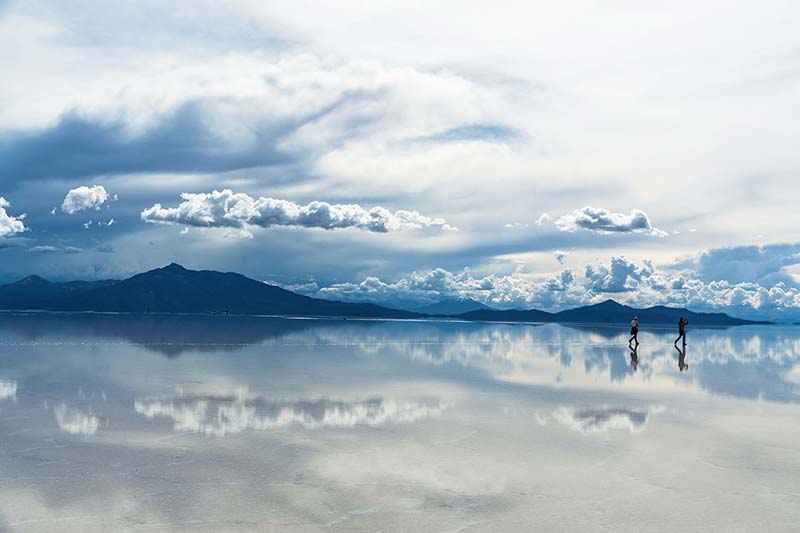
Salar
de Uyuni
The Bolivian large open spaces which the most extraordinary is, without a doubt, the Salar de Uyuni, are accessible from La Paz by bus, from Potosi and San Pedro de Atacama in Chile by bus or by 4×4 car. Each of these itineraries, very rich in discovery, cross through completely different regions that the traveler will have the opportunity to choose at will.
Leaving from La Paz:
It takes 4 hours by bus from La Paz to Oruro, charming stop at the Bolivian South. This Indian city is dedicated to mining operation, holds a fabulous cultural heritage based on ancestral traditions linked to the famous Carnival, celebration taking place every year during Mardi Gras. The Carnival of Oruro develops in parades when crowds in costumes and with extremely beautiful masks dance in the streets. Known as the “diablada” the masks the dancers wear are shaped in mythical demons, the Carnival of Oruro can be seen also in a beautiful museum dedicated to collections of colorful and magnificent costumes.
- Leaving from Chile: Please consult the information regarding Atacama. Desert
- Leaving from Potosi: Please consult the information included in “Historical and Colonial Bolivia.”
Salar de Uyuni – 7 hours by train from Oruro, city hovering in the glacial desert of the Southwest at 3669 meters of altitude. It can be accessed also by plane leaving from La Paz through the airline “Amazonas”. Departure point for the discovery of the salar which organized trips are to be highly recommended in order not to miss this important location and have a bit of more comfort in these harsh areas.
The largest salt reserve in the world, the Salar stretches out endlessly, some 12000 square kilometres with an immaculate white when it dries out from July to September. The blue sky and the white lake provide one of the most striking landscapes of our planet! By 4×4 car or on foot, you can traverse the lake and visit the islands beautified by cactus: Incahuasi and Cascara de Huevo. Close to the village of Colchani, it is possible to understand the harsh work it entails to extract and treat the salt.
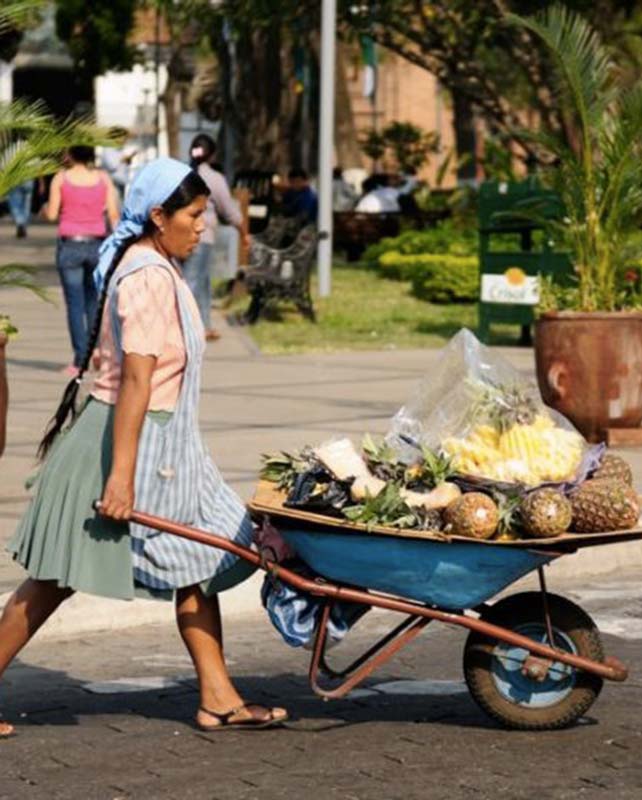
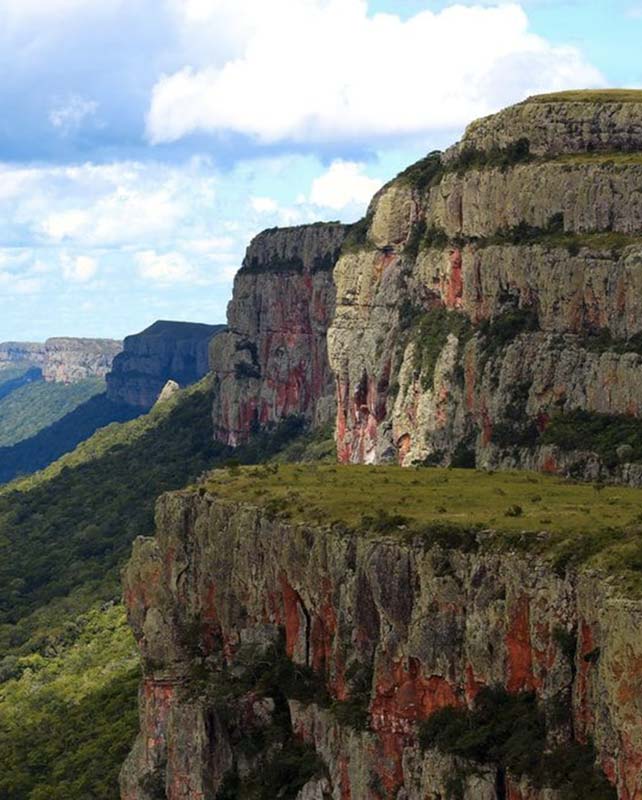
Santa Cruz de la Sierra
Santa Cruz de la Sierra, close to the Brazilian border, benefits of tropical climate all year long. This is an important point of entry for Bolivia since the company Air Europa offers numerous flights to this destination with stop in Madrid. This arrival to Bolivian territory allows the traveler to rest before visiting the sites in high altitude.
Santa Cruz, economic central point of the country, has known how to preserve its peaceful charm despite its very cosmopolitan population. The urban plan presents a concentric outline with the Plaza 24 septiembre in the center where it is possible to stroll in a tropical environment and visit the main landmarks of the city the Basilica Menor de San Lorenzo, built in 1845 and its museum of sacred art. The Zoo of Santa Cruz houses many animals from the tropical region of South America and to relax, outside of the city, the Biocentro Guëmbes, with 10 natural pools and exhibitions of orchids. This is a popular meeting point for the residents of the city.
Towards the eastern Andes, a getaway to Samaipata, located at 1650 meters of altitude, offers a beautiful incursion in the still wild vegetation. Filled with hostels and restaurants, which confirms the touristic vocation of the region, the most important site is EL Fuerte, bastion pré-inca registered as Unesco’s World Heritage. The archaeologists are not very certain about the nature of the site exactly, village? temple? Fortress? However, el Fuerte was built in a spectacular location, on the top of a hill, overhanging at the foothills of the Andes and the plains
TOWARDS THE EASTERN ANDES
The discovery of Eastern Bolivia makes all sense if the traveler takes the “Jesuit route” to visit the magnificent missions made famous by the movie “The Mission”, Golden Palm at the Cannes Festival in 1986. It must be known that the transportation time by roads, some of them still trails, is long. On the other hand, the region has charming and comfortable hotels, as it is recommended to spend at least two nights in the area in order to discover the most precious missions.
The Jesuits arrived in the region on the 17th century and have dedicated their life to convert the indigenous people especially through art and sacred music. Even today, the musical talent of the natives of Chiquitania is well recognized. Numerous musical groups exist and maintain the tradition of the past. Every two years, an important sacred music Festival takes place at the missions, perfect setting for high quality concerts.
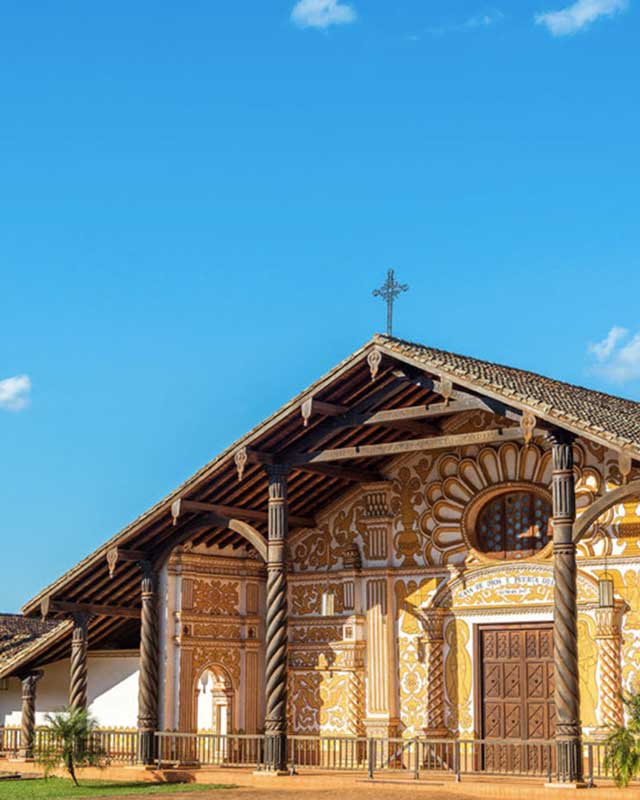
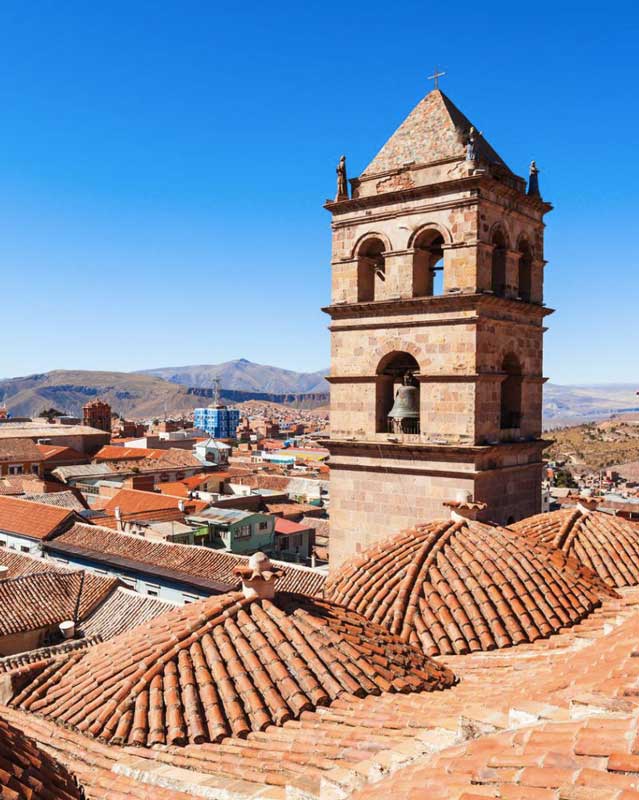
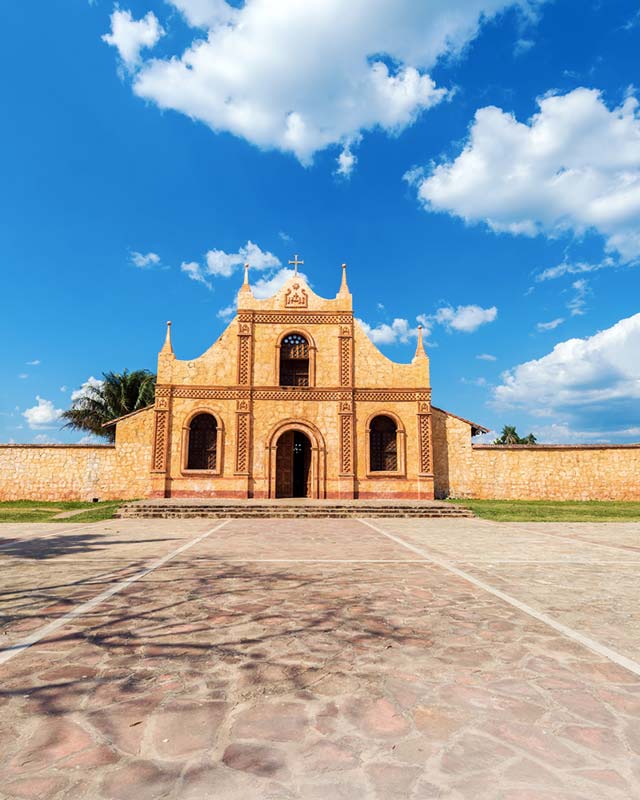
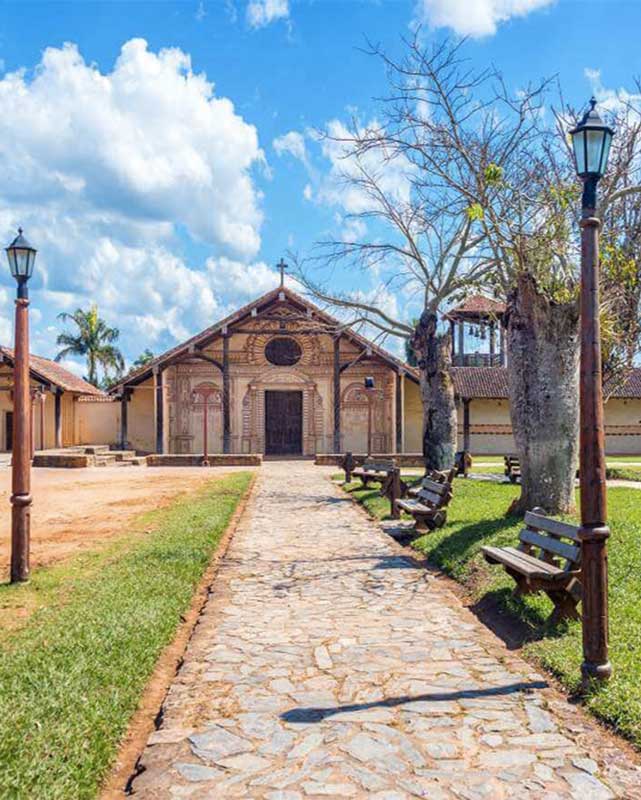
Among the most beautiful Jesuit missions located in the villages and small peaceful towns inviting to walk, we highlight:
San Javier – three hours away from Santa Cruz. Church built in the 17th century, music school founded in the 18th century and workshop manufacturing musical instruments.
Concepcion – the visit of the 18th century cathedral is worth to take a detour to enjoy the architectural richness in its interior in the pure criollo baroque style.
San José de Chiquitos – the magnificent missionary church was built by Jesuits, structured in 4 buildings around a courtyard.
Other Missions : San Ignacio de Velasco, Santa Ana de Velasco.
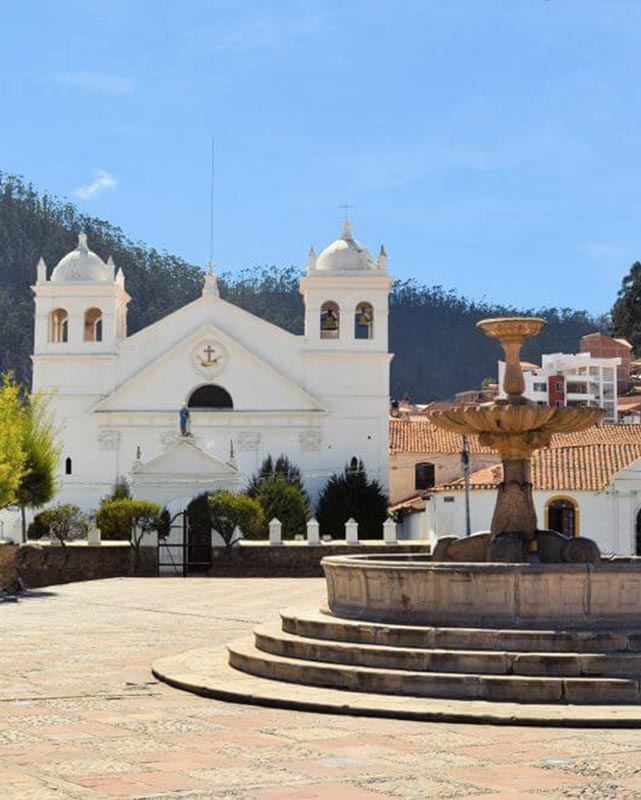
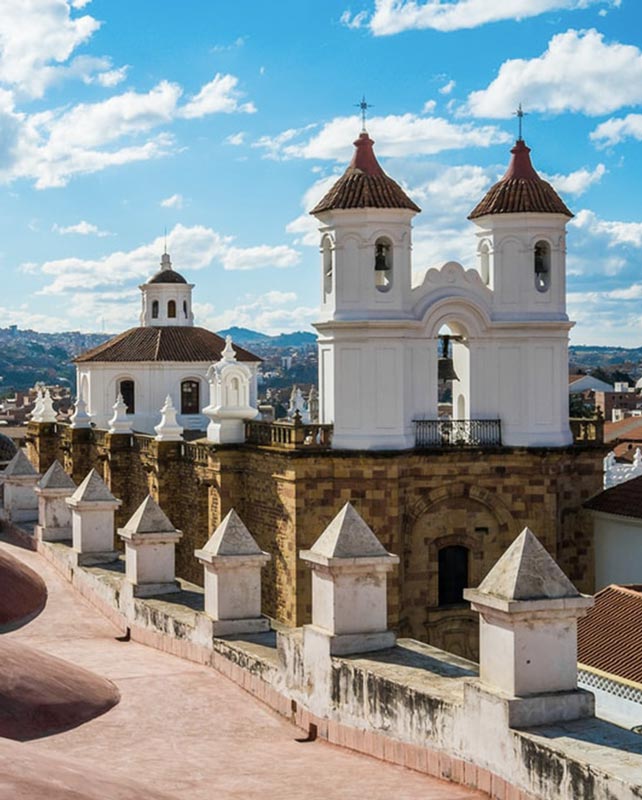
Sucre
Sucre, the constitutional capital of the country has the most beautiful historical architectural set in the country, ranked by the Unesco as cultural heritage. Located at 2790 meters of altitude, the city is accessible by daily flights departing from La Paz.
Nestled in a valley surrounded by the Andes Mountains, Sucre has a pleasant climate, an invitation for walks through streets and squares. Two full days are necessary to well discover all the treasures of this city that has hotels and restaurant were kind and quality service is provided.
Settled in its historical and religious past, Sucre has many colonial buildings and baroque churches lavishly decorated. At the square 25 de Mayo, visit the Cathedral and the Chapel of the Virgin of Guadalupe (17th century). The ancient convent of Santa Claracurrently houses a collection of sacred art and the visit of the churches of San Francisco and de Santa Monica constitute beautiful examples of architecture in Moorish and Mestizo styles.
Very lively cafes are also an obligatory stop for the traveler to dive into the delightful atmosphere of the white-city.
The Sunday market of Tarabuco – one and half hour away from Sucre, this indigenous market gathers all the communities of the region that come on Sunday to sell their crafts, whose textiles are considered among the most beautiful of South America.
Potosi
Potosi, classified Worldwide Heritage Site by the UNESCO, is accessible leaving from Sucre through 3 hours of mountain roads and can also be the departing point toward the Salar de Uyuni, 3h30 by road.
At 4000 meters of altitude, it remains the “city of the silver” thanks to the mine of Cerro Rico that dominates the city and provided wealth to Spain during the colonial period. The tradition of work to extract silver still exists but the reality is far from the opulence of the past. It is possible to visit cooperative mines and meet the miners working in their thankless and difficult jobs. To be noticed the extreme hospitality of the residents of this city to add a charming note to the discovery of Potosi.
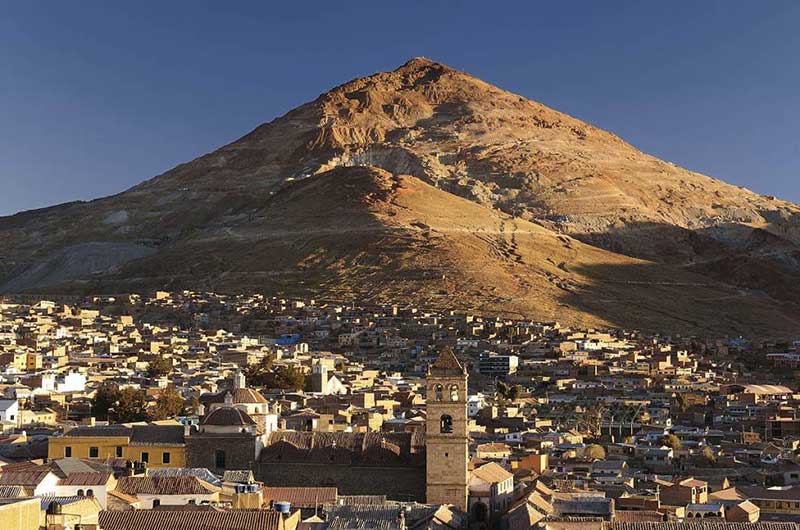
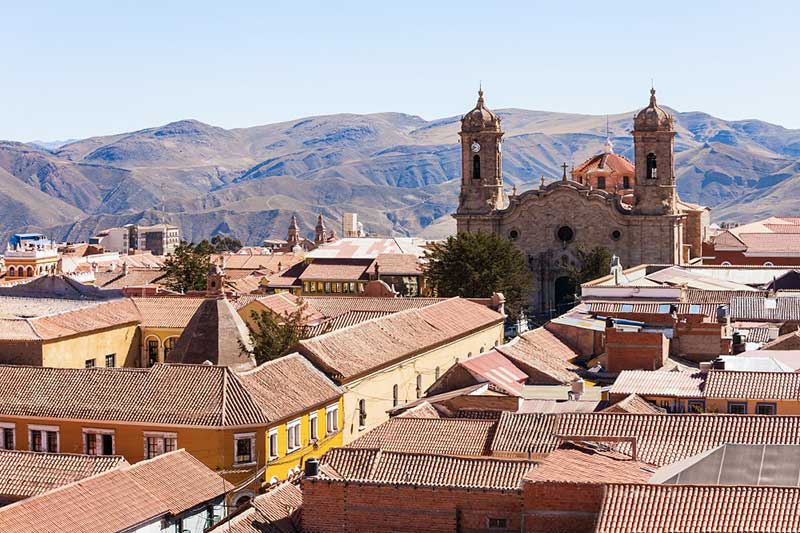
Place that cannot be overlooked, La Casa Real de la Moneda is impressive with its solemn beauty and the wealth inside. True fortress, the huge building was used to control the stamping of colonial pieces. It is particularly an exceptional museum with religious paintings of Mestizo art and also pieces that were used to shape silver pieces, named “potosis”.
The religious monuments, churches and convents are bountiful and attest to the wealth of Potosi when it was the most important city in South America for the Spanish Crown.
Please take note of the museums and convents of San Francisco and Santa Teresa. The walk through the winding streets unveil colonial houses with monumental doors which some are


